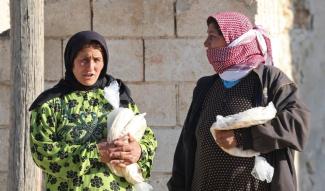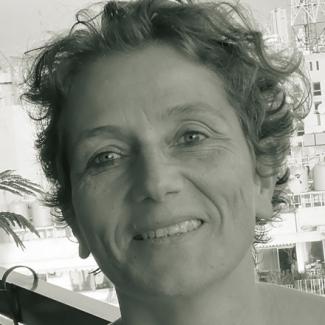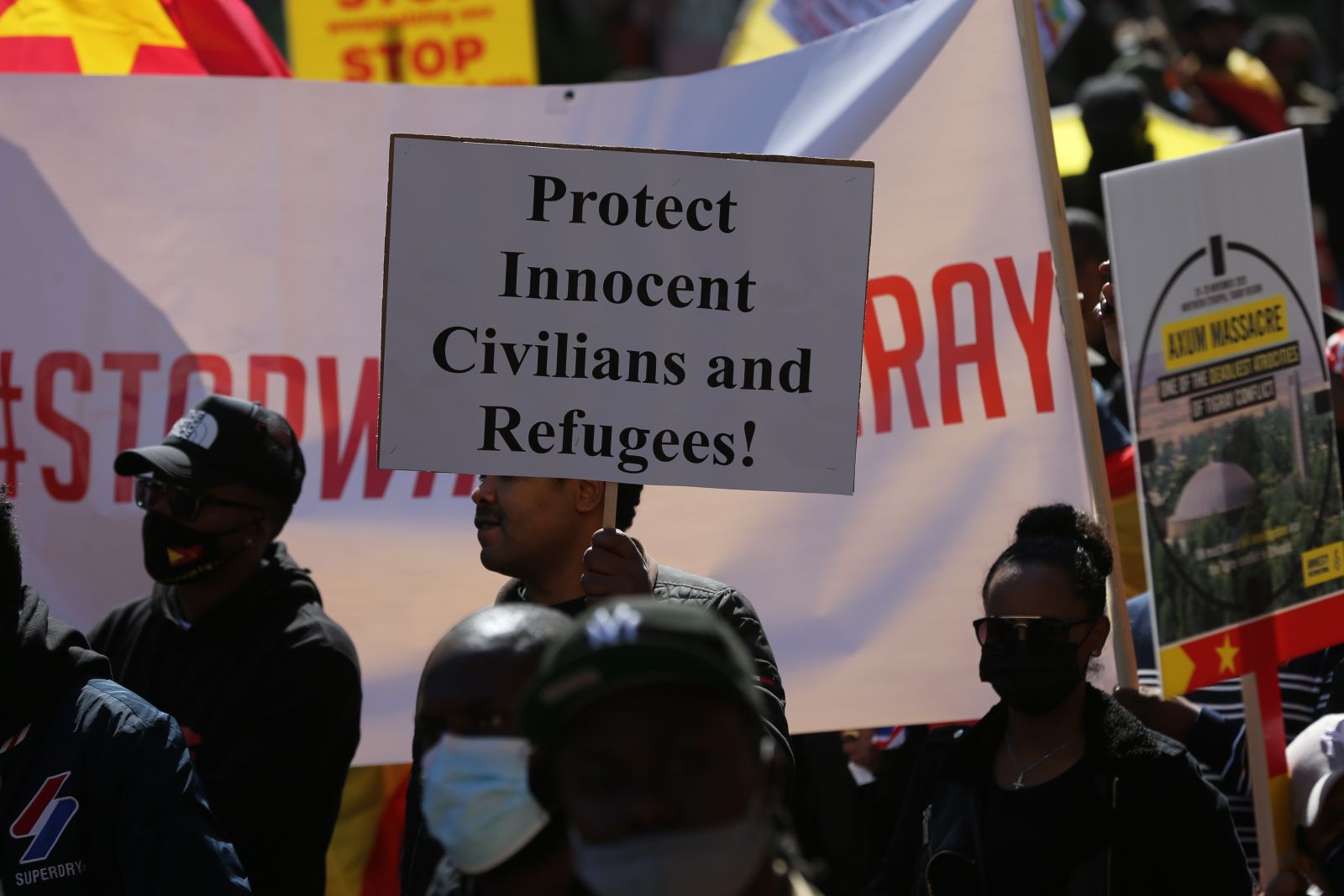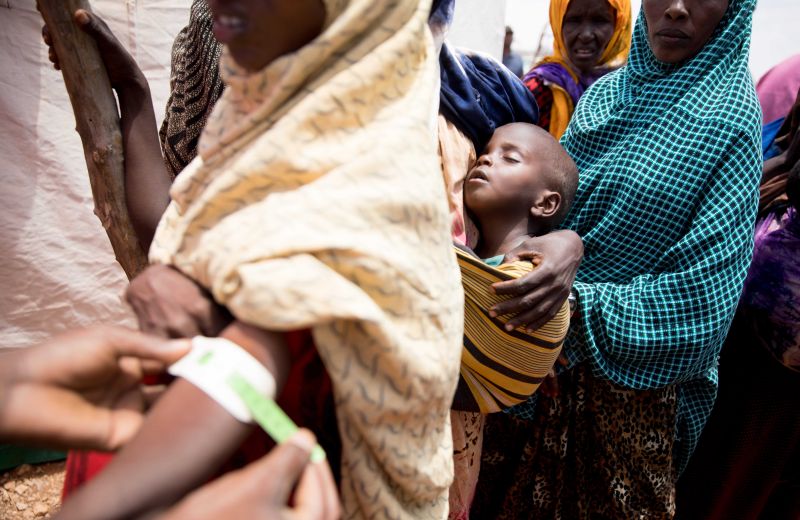Civil war
Limited access to Syrian people in crisis situations

The conflict in Syria, which began in the spring of 2011, has become one of the most brutal wars in recent decades. Local, regional and international forces are involved in the fighting. The UN stopped counting the dead in 2014 because it could not access disputed territories and was no longer able to review its sources.
According to estimates, some 400,000 to 500,000 people have died. The Syrian Network for Human Rights, which is keeping a painstaking record of attacks with civilian casualties, reports that 217,764 civilians had been killed by the end of April 2018. Approximately 1 million people had been wounded. According to the UN Refugee Agency (UNHCR), over 5 million Syrians are registered as refugees in neighbouring countries. About 1 million Syrians have found sanctuary in Europe, and about 6 million are living as displaced people in their own country. Over half of them are children and young people. Many are suffering a humanitarian crisis (also note article by Dagmar Wolf, p. 6).
Numerous resolutions
The UN Security Council has drafted numerous resolutions on Syria, many of which focus on protecting civilian people and providing humanitarian aid. Violations of international laws and human rights have been decried. Civilians are being attacked with conventional and chemical weapons. They are being put under siege and starved. Civilian infrastructure has been hit – including schools, hospitals, markets, refugee camps, houses of worship and warehouses for aid supplies.
Local and international humanitarian aid workers are coming under intentional fire too. From the beginning of the conflict to June 2017, over 320 health facilities were targeted, primarily in the provinces of Aleppo, Hama and Idlib, as the website Syria Deeply reports. Specialist clinics as well as maternity and paediatric wards have been shelled. Some aid agencies decided to suspend their efforts because they could not guarantee the safety of patients and personnel. The perpetrators of the attacks have not been punished.
The war in Syria has also meant that approximately two-thirds of the people have neither electric power nor running water. In many areas, people fear for their lives on a daily basis. Many homes have been destroyed. Other people have been driven away from their homes. Some regions have only rudimentary health care, others have none at all.
Many people have lost their jobs and are now living in extreme poverty. The prices for daily necessities – like basic foodstuffs, hygiene products or gas cylinders – have risen sharply. The value of the Syrian pound has dropped dramatically. Many people lack sufficient food and drinking water. Children and young people are not going to school. A third of schools has been destroyed and many others are now home to refugees.
UN OCHA, the UN Office for the Coordination of Humanitarian Affairs, reports 70 % of Syrians depend on humanitarian aid. That amounts to almost 13 million people in need of shelter, food, drinking water and health care. But a great many of them can’t be reached because aid convoys and humanitarian workers do not have access to where they are. Emergency relief needs permission from the Syrian government and various militias, and any of these parties can refuse to grant it.
Only a fraction of the requested UN aid convoys to besieged and hard-to-reach regions are approved. What’s more, Syrian authorities routinely inspect the approved convoys and subsequently confiscate urgently needed medications, as happened in Douma in March of this year. A spokesperson for the World Health Organization (WHO) reported that Syrian security forces stole life-saving medical supplies.
One example of the powerlessness of aid organisations is the siege of Eastern Ghouta, north-east of Damascus. For five years, around 400,000 people were encircled by Syrian government forces and their allies. The goal was to force the surrender of the Islamic militants who had taken hold of the region. The free passage of basic necessities and life-saving medical supplies was blocked.
Not enough medical supplies
The residents of eastern Ghouta suffered hunger. The sick and injured were rarely allowed to leave the area. Early this year, Ahmad Tarakji, the head of the Syrian American Medical Society (SAMS), described the difficulties his team had to cope with. The facilities they operated were attacked. They did not have enough medical supplies. Permission to evacuate emergency cases was only granted sporadically. In 2017, SAMS applied through UN organisations to evacuate over 600 medical emergencies that could not be treated in eastern Ghouta. After processing the applications for six months, Syrian authorities allowed 29 sick people to leave eastern Ghouta to seek treatment in the capital’s hospitals. In the meantime, 19 of those patients had died.
The organisation Doctors Without Borders (MSF – Médecins sans Frontières), which worked in eastern Ghouta until March 2018, similarly reported insurmountable challenges. Lorena Bilbao of MSF Syria remarked after the Syrian army’s offensive began in February that clinics and health centres which the organisation supported were attacked. These facilities also lacked necessary medical supplies and other goods. Bit by bit, these centres could no longer provide health care.
The situation of displaced people is desperate too. They are hard to reach and in urgent distress. They lack food and water. People are living in camps, transit centres, informal settlements or public buildings in various Syrian regions. Mines and improvised explosive devices are still common in those parts of eastern Syria, like Raqqa and the surrounding area, which are no longer under the control of the terrorist organisation ISIS, and they restrict aid workers’ scope for action.
Ongoing fighting, an inability to access people in need and bureaucratic hurdles are among the greatest challenges that local and international aid organisations face in Syria. Every month, only about half the people requiring emergency assistance can be reached on average. Aid organisations keep issuing calls, and the UN Security Council keeps adopting resolutions pleading for all warring parties, but especially the Syrian government to allow free access. That would also include access via the neighbouring countries of Iraq, Turkey and Jordan.
The war in Syria is now in its eighth year. An end is not in sight. The major concern of all humanitarian agencies is adequate funding for their programmes. At a donor conference for Syrian refugees held in Brussels at the end of April 2018, the participating countries pledged roughly half the amount the UN was requesting for humanitarian aid: $ 3.7 billion instead of $ 6.5 billion. It is unknown how much money the donors will actually disburse. In 2017, only about half the aid that was promised actually materialised. For people in Syria and Syrian refugees in neighbouring countries, that means fewer food rations and fewer children in school.
Mona Naggar is a journalist and media trainer. She lives in Beirut, Lebanon.
mona.naggar@googlemail.com
Links
UN OCHA: Syrian humanitarian response plan.
https://fts.unocha.org/appeals/629/summary
Syrian American Medical Society (SAMS):
https://www.sams-usa.net/
Syrian Network for Human Rights:
http://sn4hr.org/blog/2018/05/01/52129/












